GL: I think a lot of people thought that in the forties and fifties an artist just read the book and decided all by himself what he wanted to do for the cover, then just did it. I see it's a lot more complicated than that.

MH: Well it can be done that way too, but you've always got to submit a sketch of what you're going to do and either get it approved or knocked down.
(Below, a page of sketches done for the 1956 Bantam Books cover above, from American Artist magazine, Summer 1957)
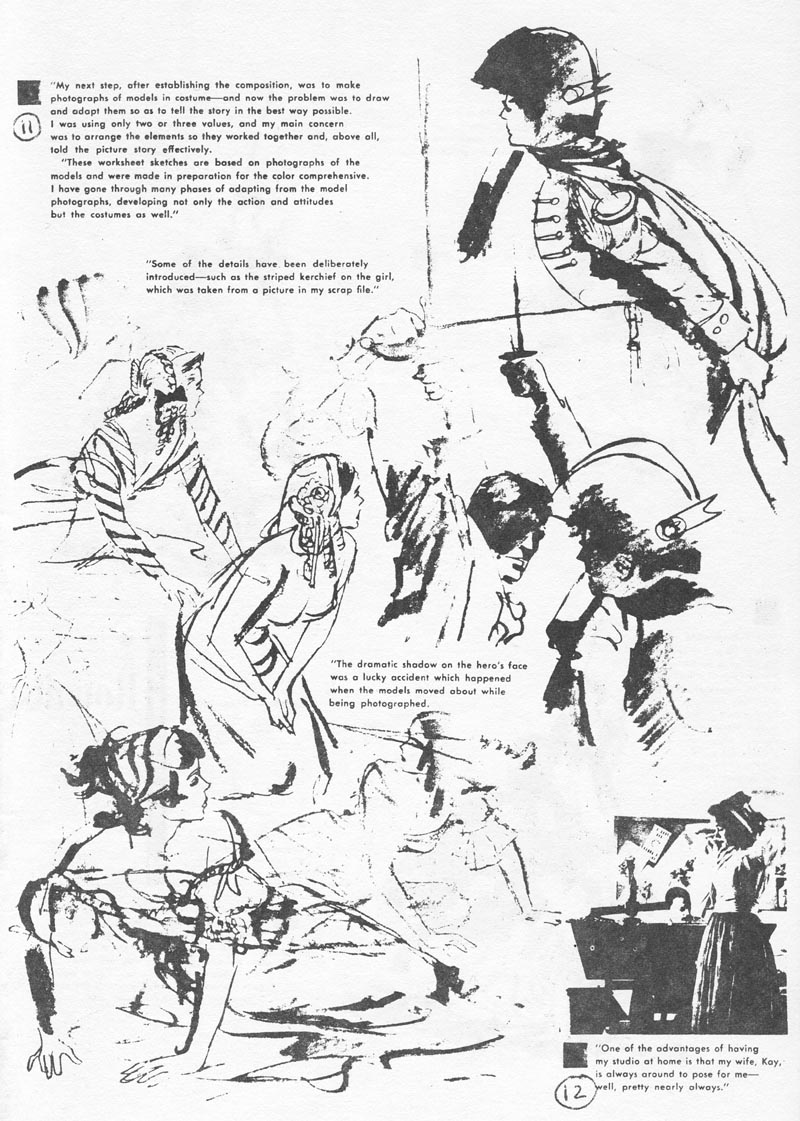
GL: What medium is your favorite to work in?
MH: I work in oils. I work in an underpainting of inks, with my basic painting inked over pencil drawings. Then I isolate that with varnish and do the finished painting in oils.
GL: Do you use photographs? Sketches?
MH: All the time. I also use models. If I have some background material that's going to show, if it's at all possible, I go out and photograph it.
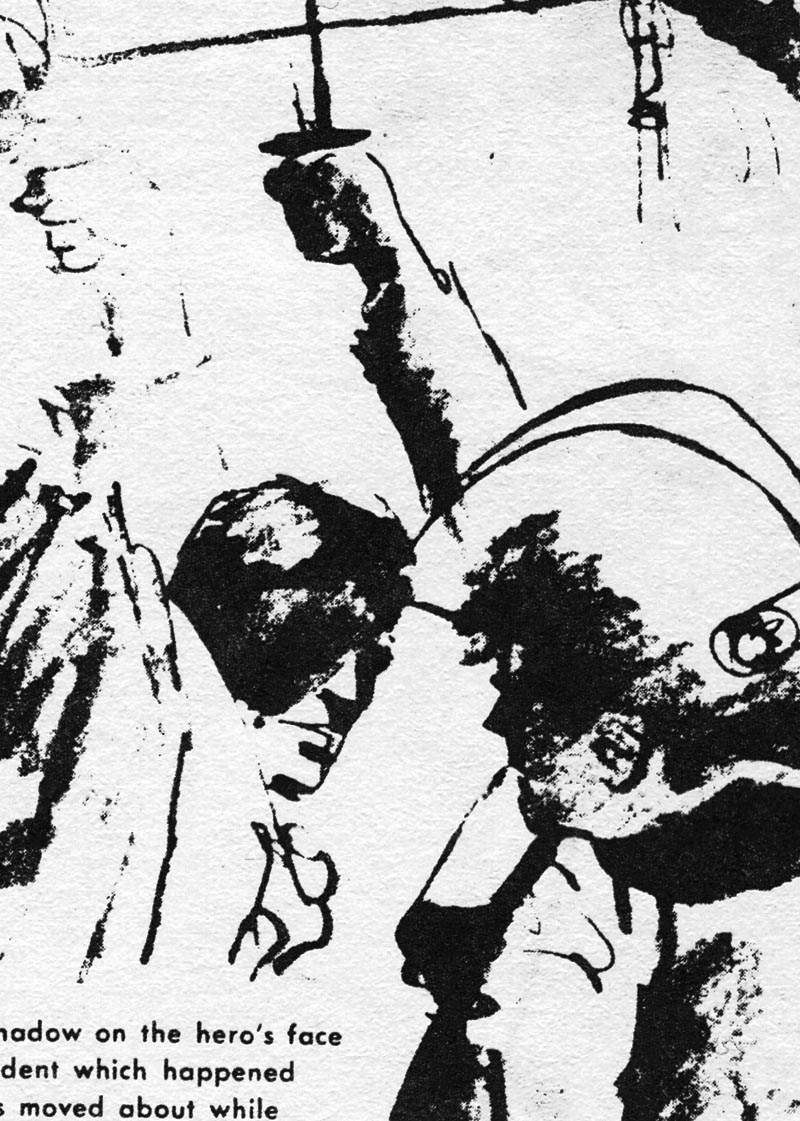
GL: Some of the women you've painted for paperback covers are very beautiful and sensuous, such as the woman on "Sleepless Moon," "Someone to Love," and "Gentle Annie" to name a few.

GL: Are these models or from imagination?

MH: They're all models. But I'm like anybody, I appreciate drawing beautiful women, but I like them to have character, to have a niceness about them.
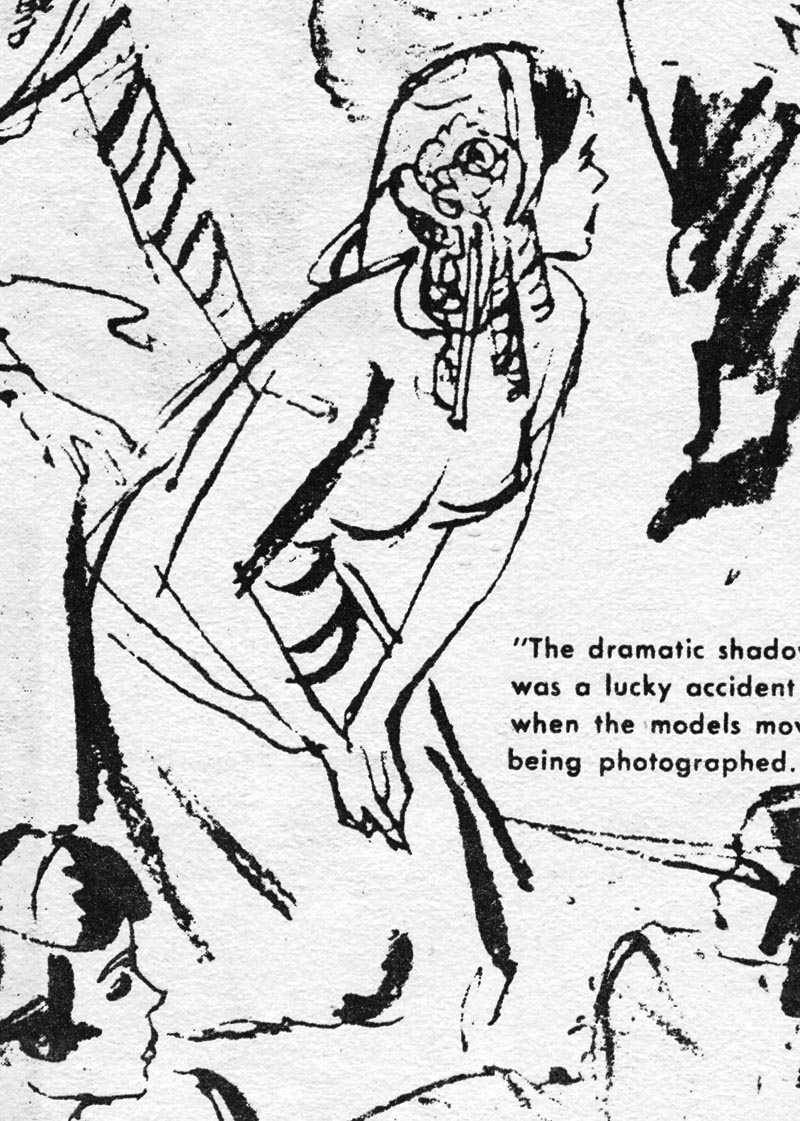
GL: I think that certainly comes through. They're not cheap or sleazy at all, they have class and elegance, but with a beauty and sensuousness that also comes through.

MH: I'm glad you see that because that's exactly what I always try to show.
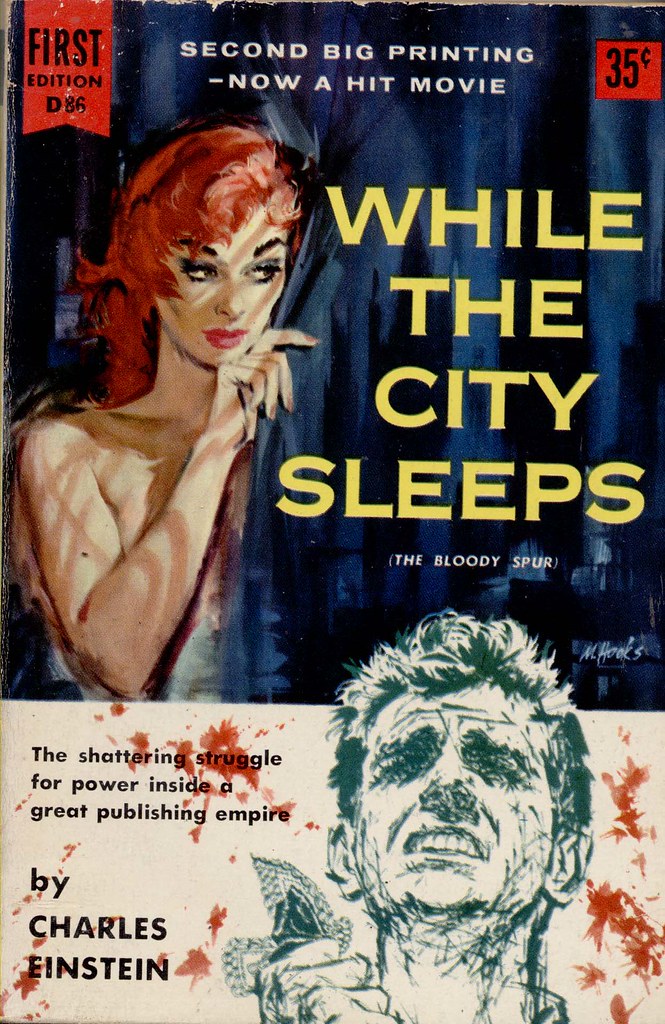
GL: I've noticed that some of your covers are done in a very sharp and clear, almost sketch-like linear style;
![1956[1969] _ Popular Library 60-2379 _ Mitchell Hooks](http://farm6.staticflickr.com/5308/5773286304_a75cdb02eb_b.jpg)
... then on newer works, like "The Dying Trade" the art is almost like a photograph. It's almost like different people are doing the painting.
(Below, a Mitchell Hooks painting circa 1990)

MH: Well it is. I've changed... the times have changed. For years I was working in a linear style. I wasn't working in oils then, I was working in wash.
(Below, Cosmopolitan magazine, 1960)

MH: It was looser, more spontaneous, more designy, a slightly impressionistic way of working. It was what I felt good doing then.
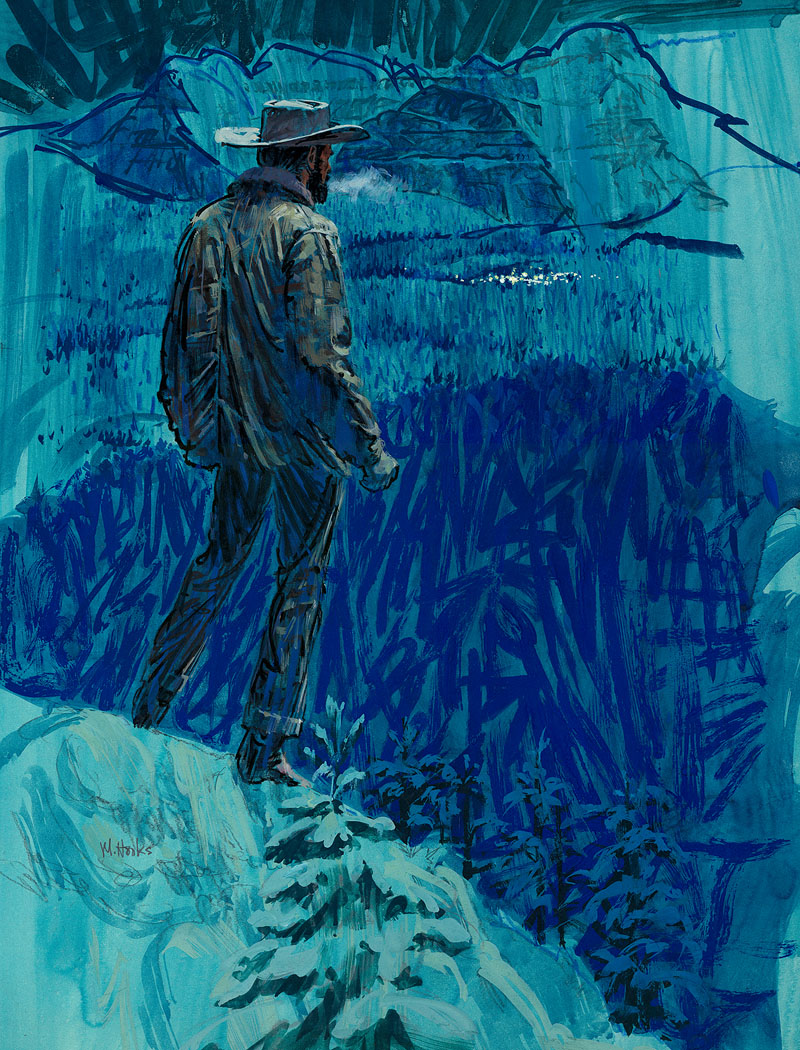
MH: As I say, you've got a good eye. you picked up the differences, but what's happened in recent years is that there's been a change in the market. There's been a change in the art scene in general - not only talking about covers - but in the fine arts, gallery arts too. As you know there's been a shift in recent years to a more realistic way of painting., a return to drawing of the figure. We see it now in galleries and museums where even ten years ago it was not accepted. Now there's been a return to a more realistic way of painting. I changed my work in that direction.
(Below, a 1980s Mitchell Hooks cover painting, "Hannie Richards", courtesy of Joe Jusko)
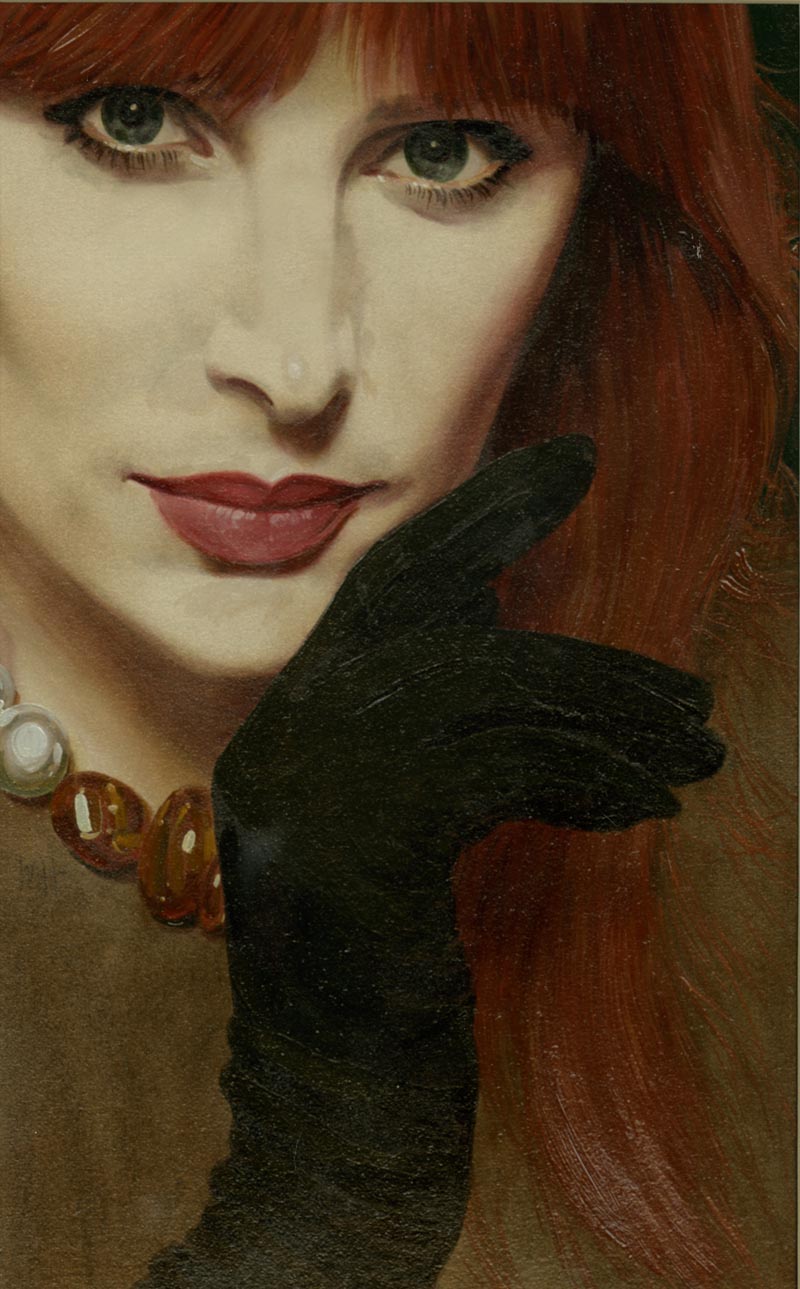
MH: I did it consciously and deliberately, starting about a dozen years ago, getting away from that line style and going to a more realistic style. It was easy to do because I actually started out as a kid painting very realistically. So what you see in "The Dying Trade" is a very recent cover, and you're right, it's very realistic.
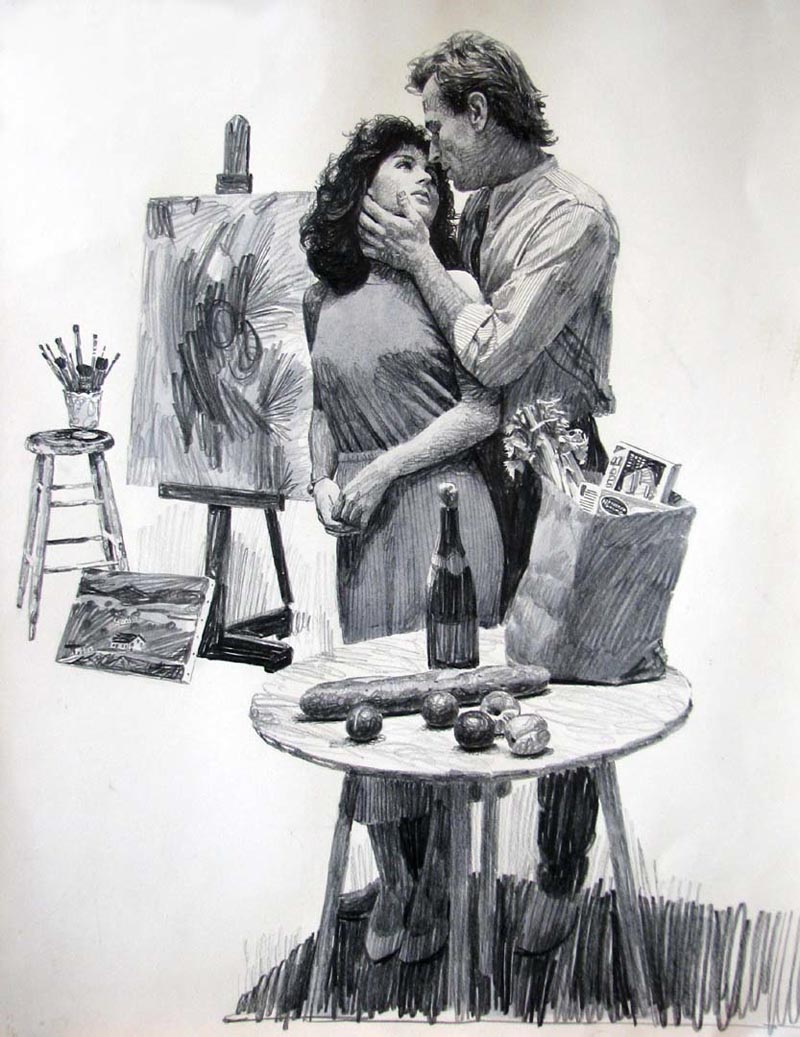
MH: It's the way I work now.
* Continued tomorrow
* The text above is copyright 1988 & 2013 by Gary Lovisi and originally appeared in Paperback Parade #7 (Gryphon Books)
Gary's website: www.gryphonbooks.com
* Thanks to UK Vintage for the use of his Mitchell Hooks paperback cover scans in today's post.
When Hooks talks about how he works in oils now, and he used to work in wash," I wonder if the original word was "gouache," and might simply have been misheard?
ReplyDeleteThat's a good question, Michael -- you could very likely be right. Although I suspect Mitchell's 1960s period work could be acrylic wash over varnished pencil/ink.
ReplyDeleteThese MH posts are wonderful! I own that B&W piece of the lovers and the easel, as well. Would love to know what it was used for. Thanks for these, Leif!
ReplyDelete